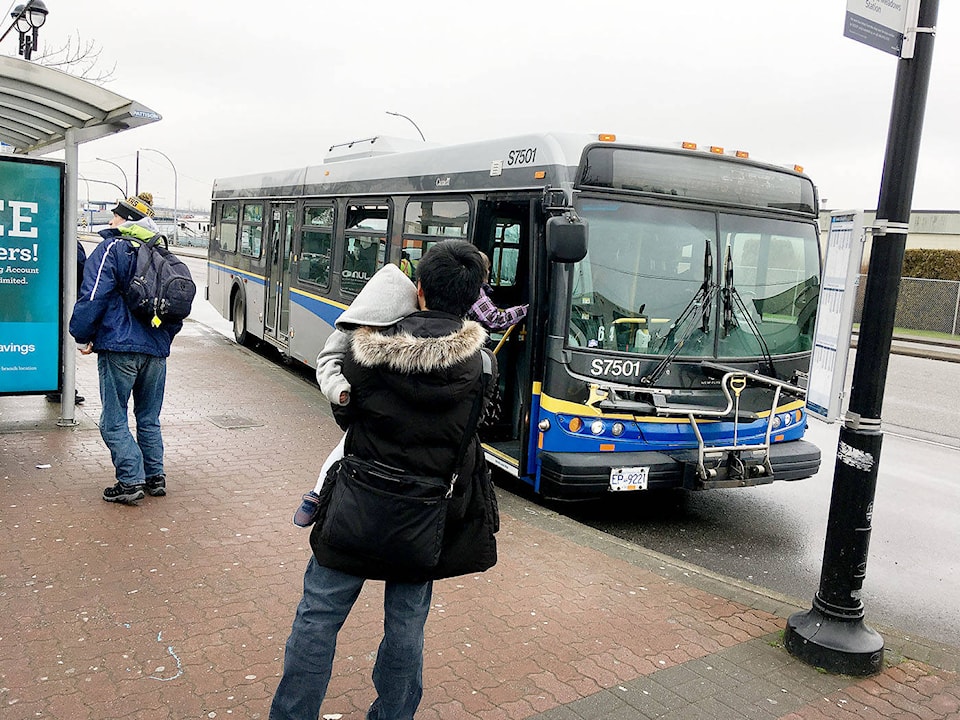Langley’s two mayors are on board with a 10-year transportation plan that aims to get Metro Vancouver ‘moving.’
On Jan. 25, Township mayor Jack Froese and City mayor Ted Schaffer were among the Mayors’ Council members who voted unanimously in favour of a motion, brought forward by Coquitlam Mayor Greg Moore, resolving that the council “calls on the Province of B.C. to confirm … its partnership in delivering the Phase Two Plan as scheduled, including provincial contribution of a 40 per cent share of capital costs of all projects in the vision.”
During a meeting of the Mayors’ Council on Regional Transportation, the committee voted to reaffirm its intention to forge ahead with its full vision for the region, which includes 27 kilometres of light rail transit in Surrey and a replacement of the Pattullo Bridge.
Froese said Langley residents have already seen the “direct results” of the Phase One Plan. “We’ve seen more frequency (of buses) at the Carvolth exchange, we’ve seen new routes come into Langley — the 208 bus route… those are immediate direct results of the first phase (of the transportation plan).”
As part of the 10-year plan, the following improvements are expected to be rolled out between now and 2026:
• A 10 per cent increase in bus service, as well as more frequent service on 50 different routes, five new B-Line routes on Fraser Highway, Lougheed Highway, Marine Drive, 41st Avenue, and Hastings Street, and 171 new buses beginning this year;
• 15 per cent increase in HandyDART service, to the tune of 85,000 new available trips annually;
• New funding for improvements to the Major Road Network, and;
• Expansion and improvements to the cycling and walking networks in the region.
The council was broken into four committees, said Schaffer, who sat on the planning committee.
“What we’re doing is looking at the areas, and the Langleys and Surrey are very much at the forefront because of the growth that’s happening,” Schaffer said.
“I think everybody around the table recognizes the need for transportation around here but at the end of the day, who’s going to pay for it and how is it going to get paid for?”
The federal government has already committed to fund 40 per cent of the project, and if the province affirms it will pay for 40 per cent, that will leave the mayors with a 20 per cent gap to fill.
In a summer 2015 referendum, Metro Vancouver voters rejected a 0.5 per cent Congestion Improvement Tax. If the tax went through, the money would have gone towards a plan to improve public transit services and transportation infrastructure in the Lower Mainland over a 10-year period.
“The plan still exists and we have to now look for other ways to fund it,” Froese explained.
Schaffer said the mayors don’t want to increase property taxes to complete the funding for Phase Two of the plan, “and so there are only so many options left.”
“Road pricing is just another way of tolling, so then you have to look at all your options,” Schaffer. “From my perspective, the longer we wait, the more expensive it’s going to get.”
“It’s up to the province on what they are going to trigger,” in helping fund Phase Two, said Froese.
So where is the funding going to come from?
“That’s the billion dollar question,” Schaffer said.
Schaffer believes light rail is a sensible, affordable solution.
“Light rail is a billion dollars cheaper than the SkyTrain to build,” he said.
“You’d need a train of buses to move the same volume of people,” Schaffer said. “As a main transportation corridor, you have to have a rail system in place. I believe it will happen. My hope is that light rail will come to Langley City within the mayors’ 10-year vision.”
“It all hinges on funding,” Froese said. “If everything goes according to the plan, we’d see (light) rail (transit in Langley) in 10 years, but it really boils down to the appetite of the provincial government to legislate the changes that are needed to pay for this.”
Froese said rail is “certainly an option that people will use.”
